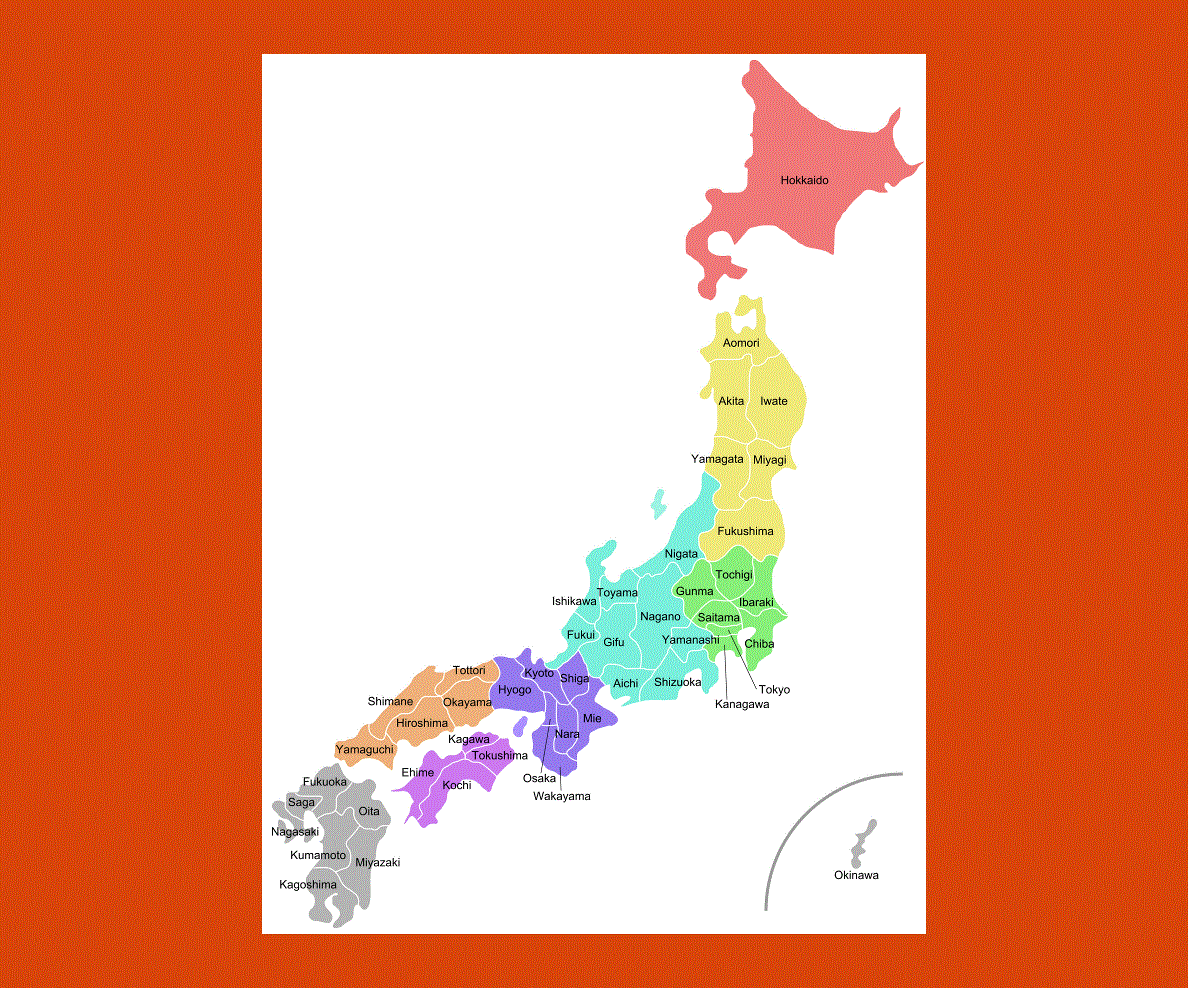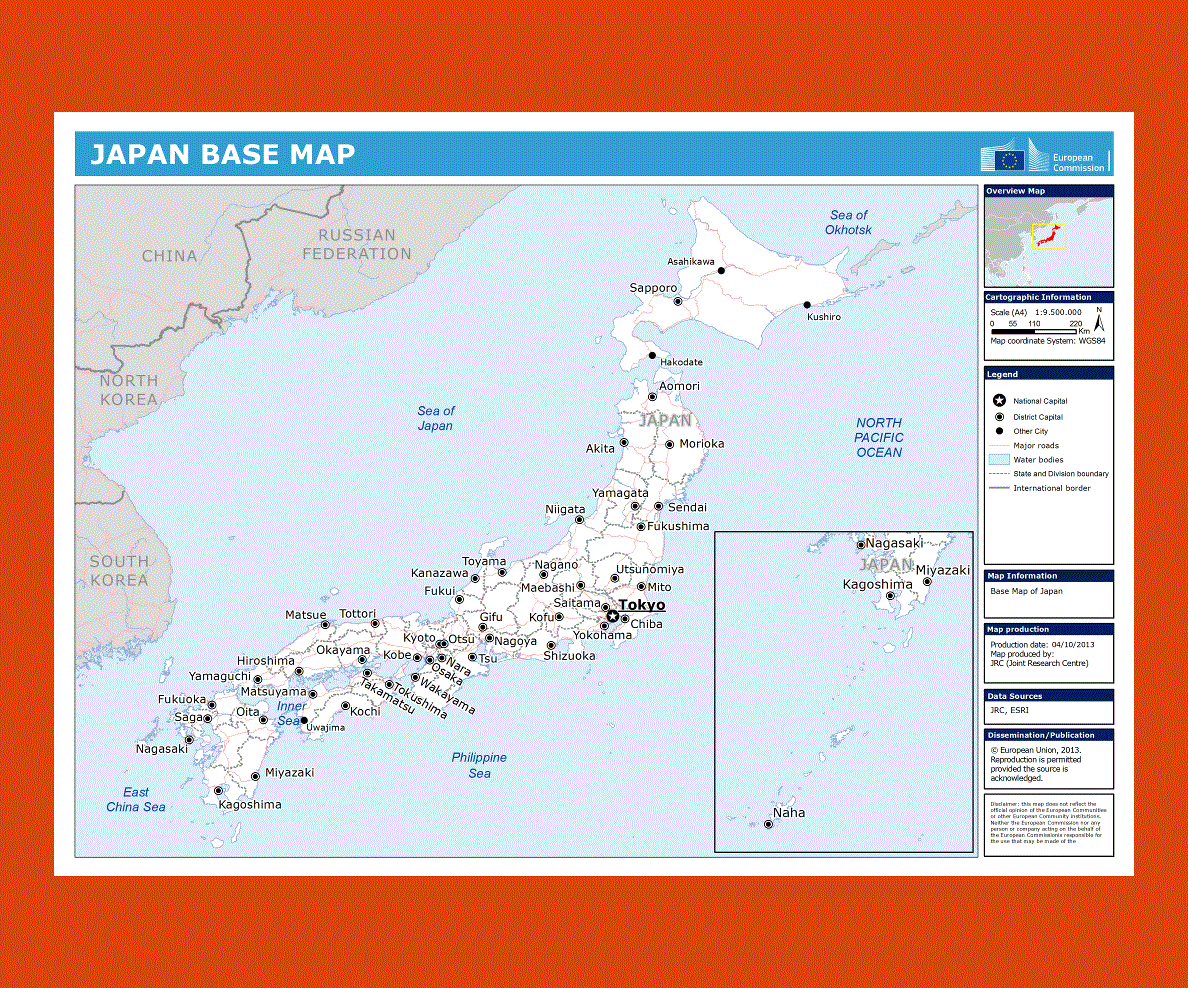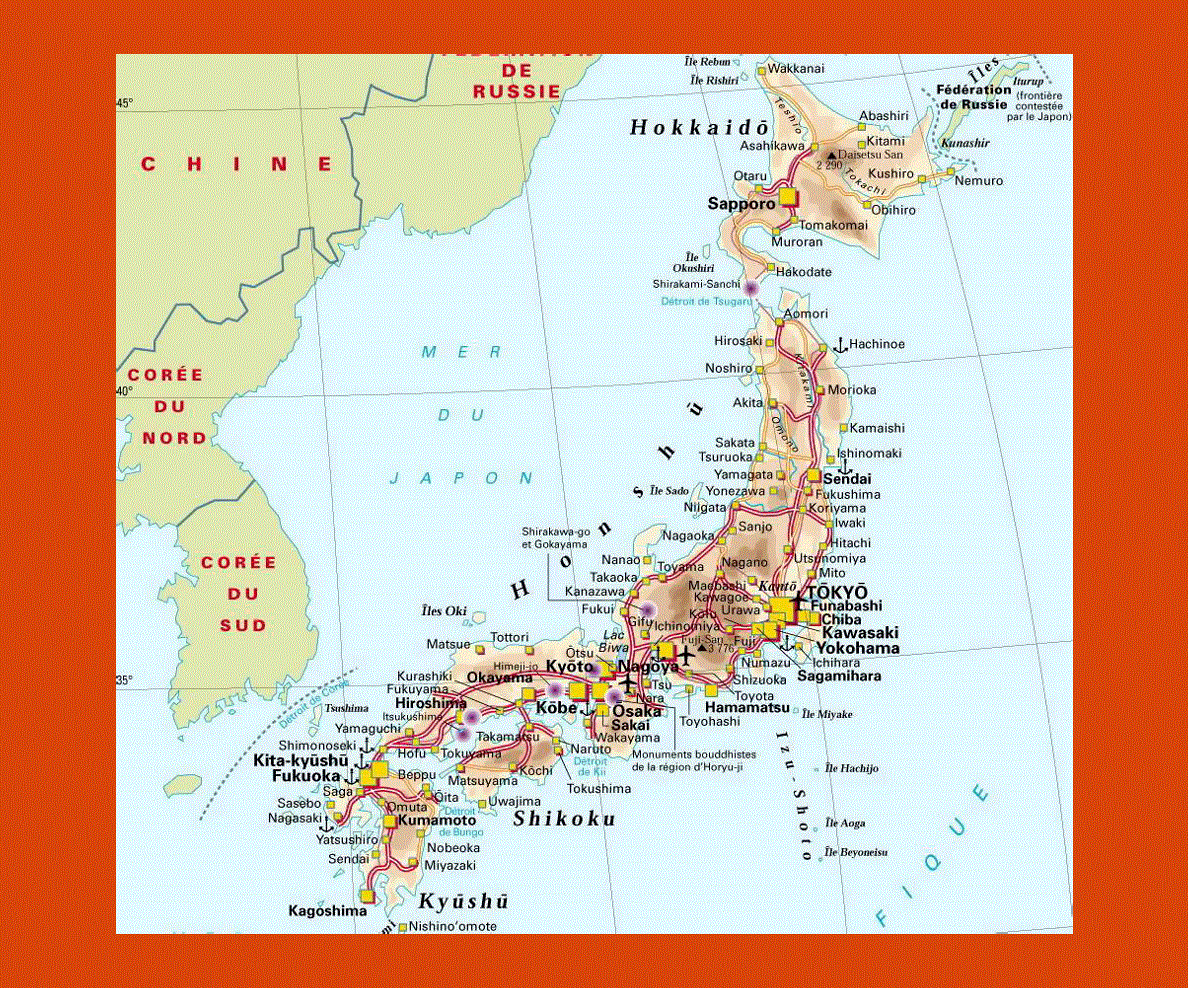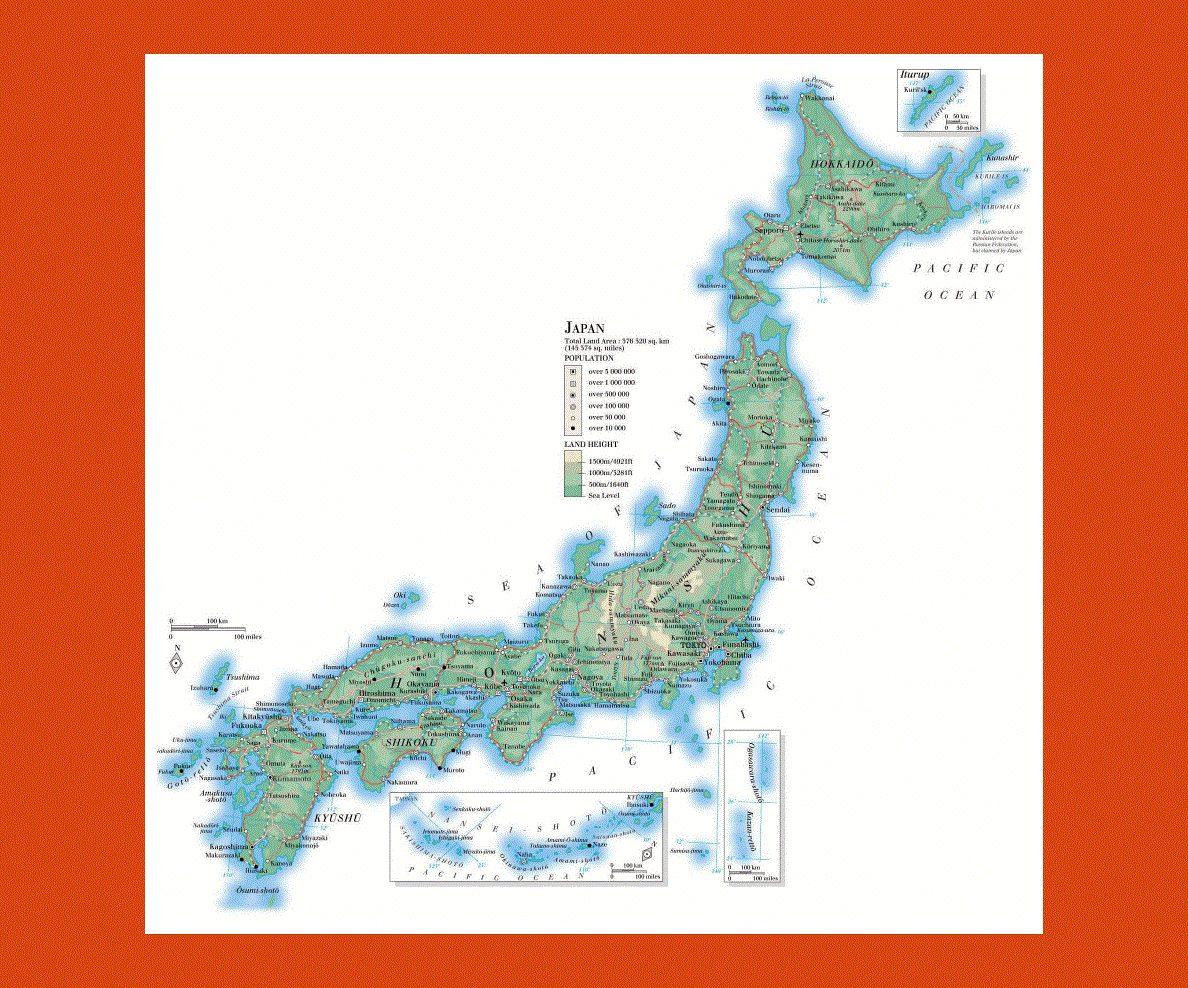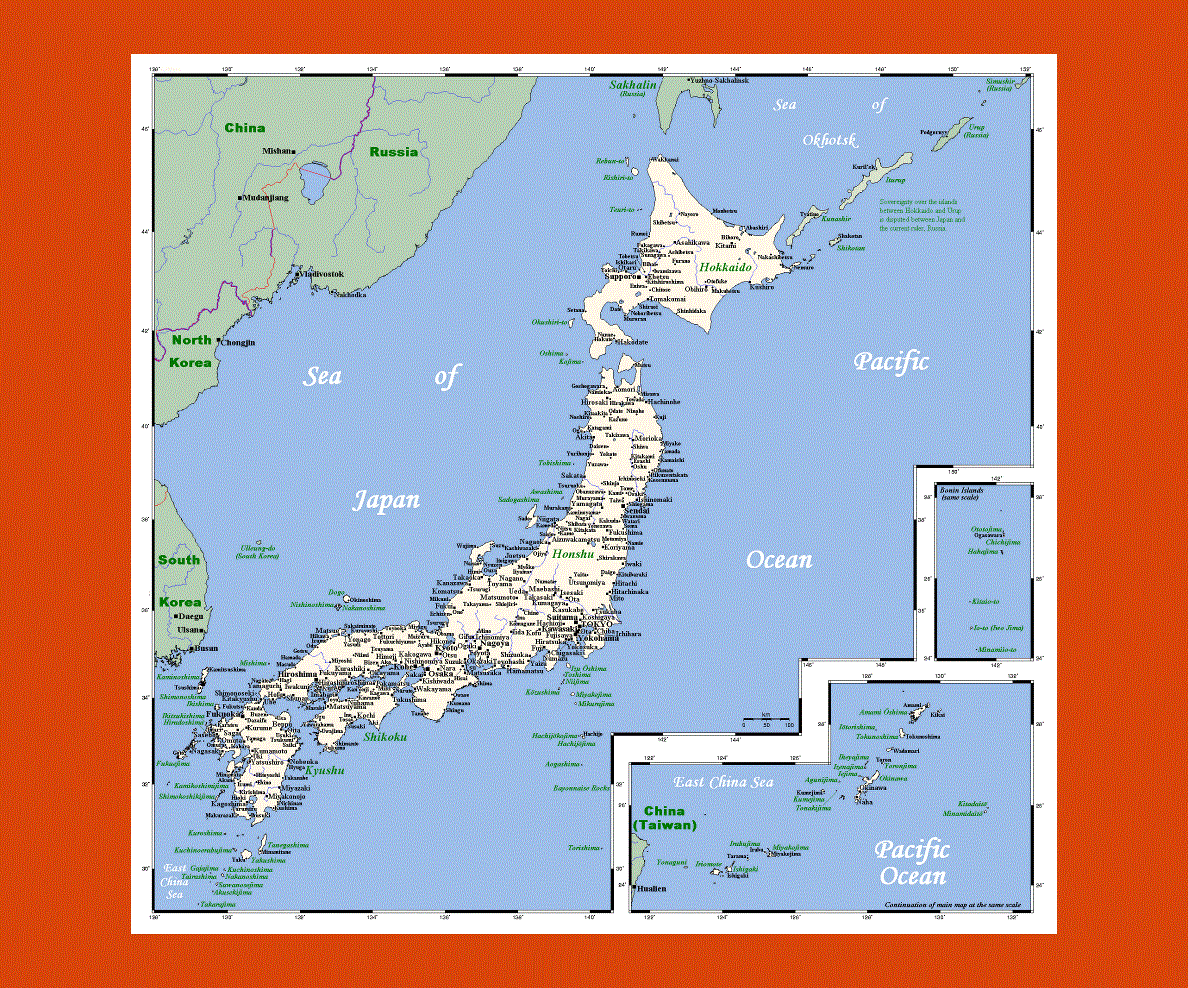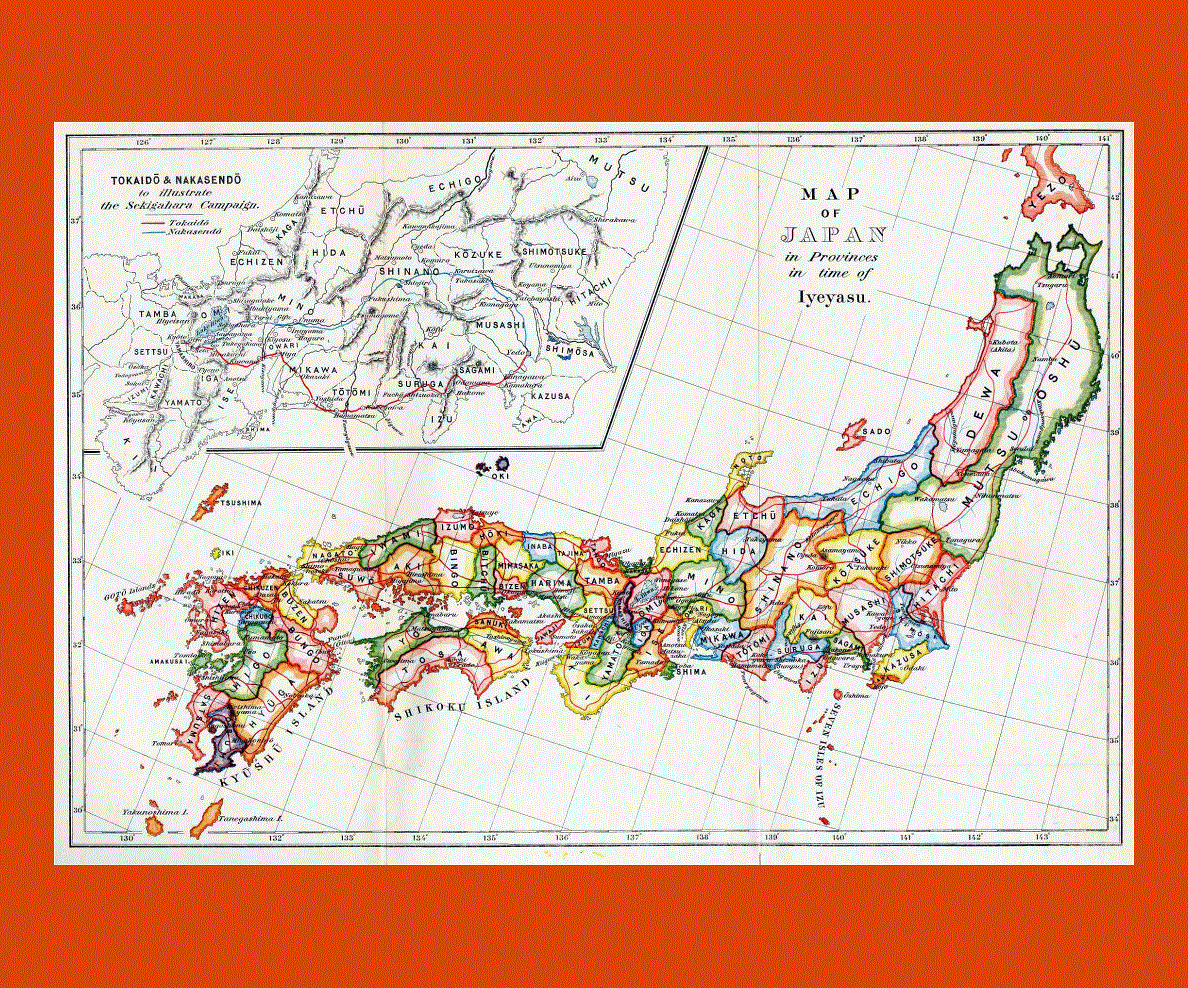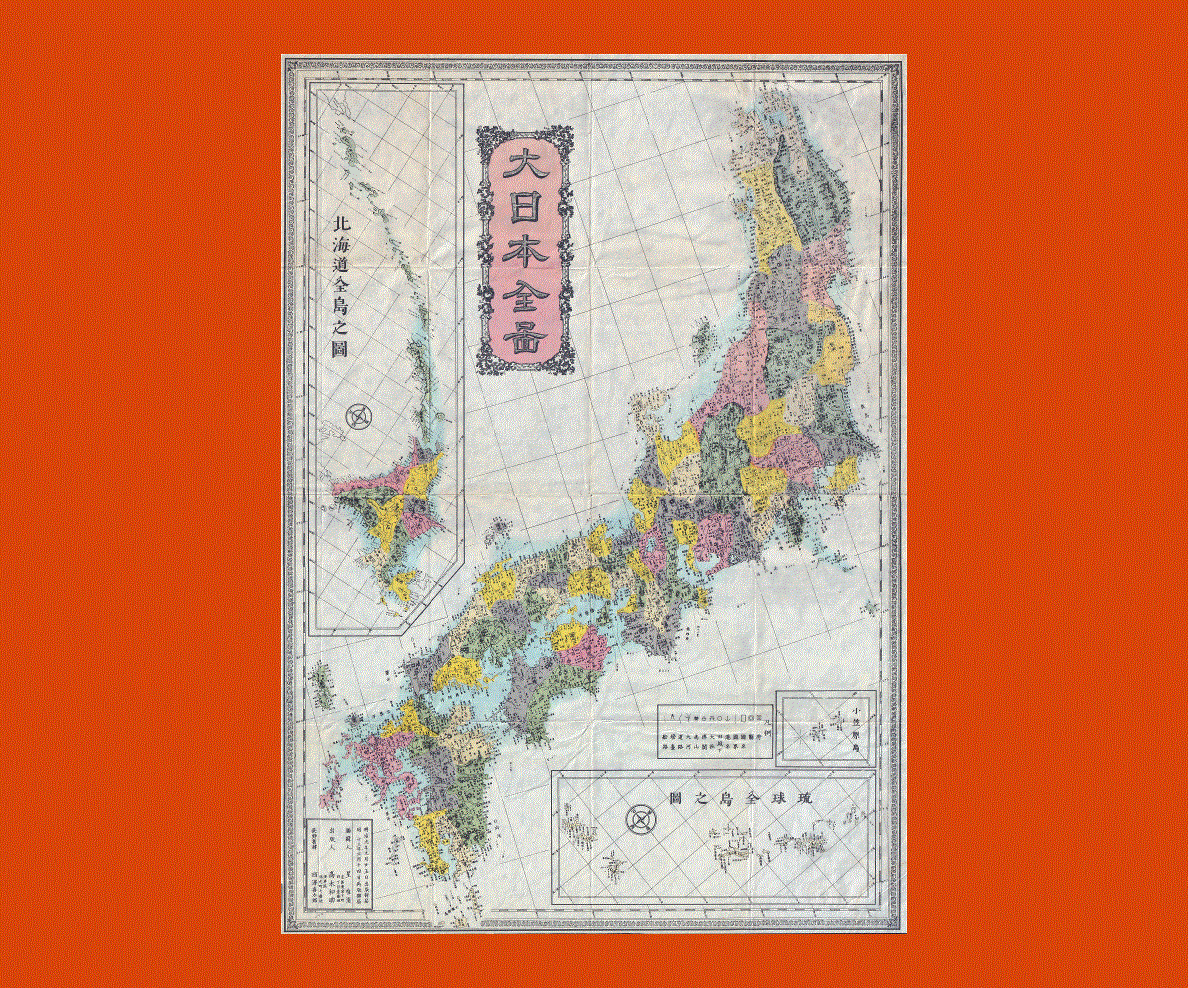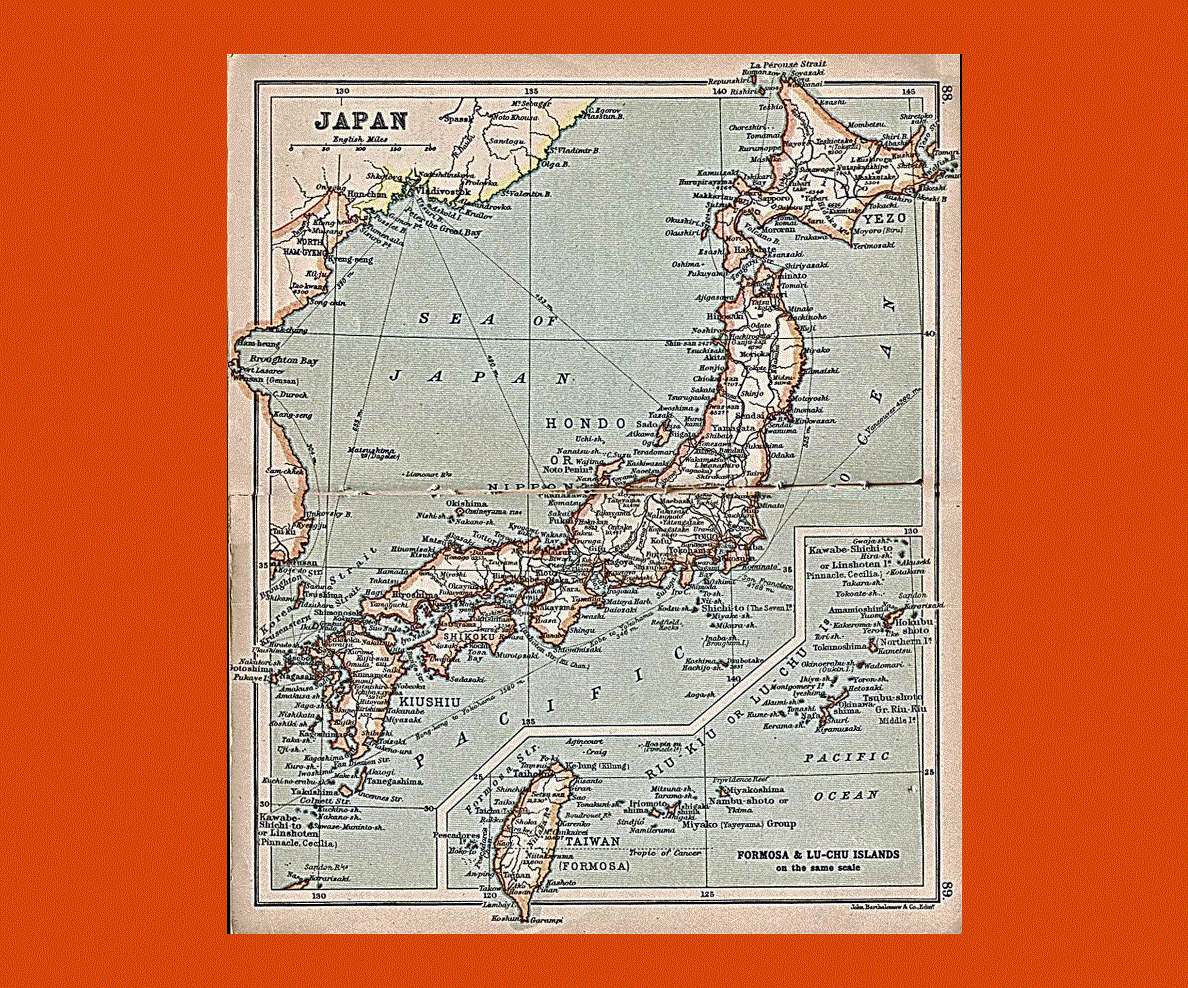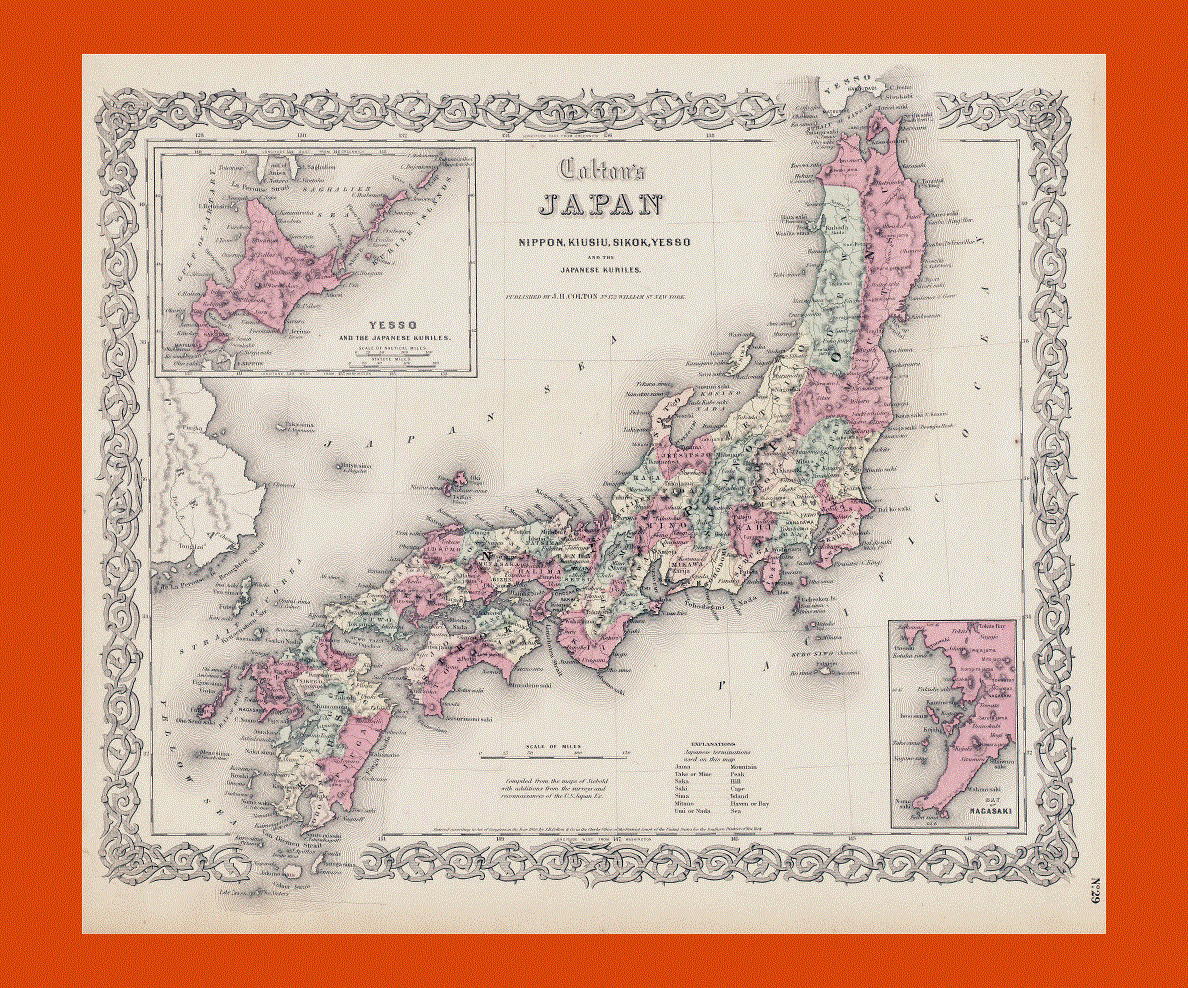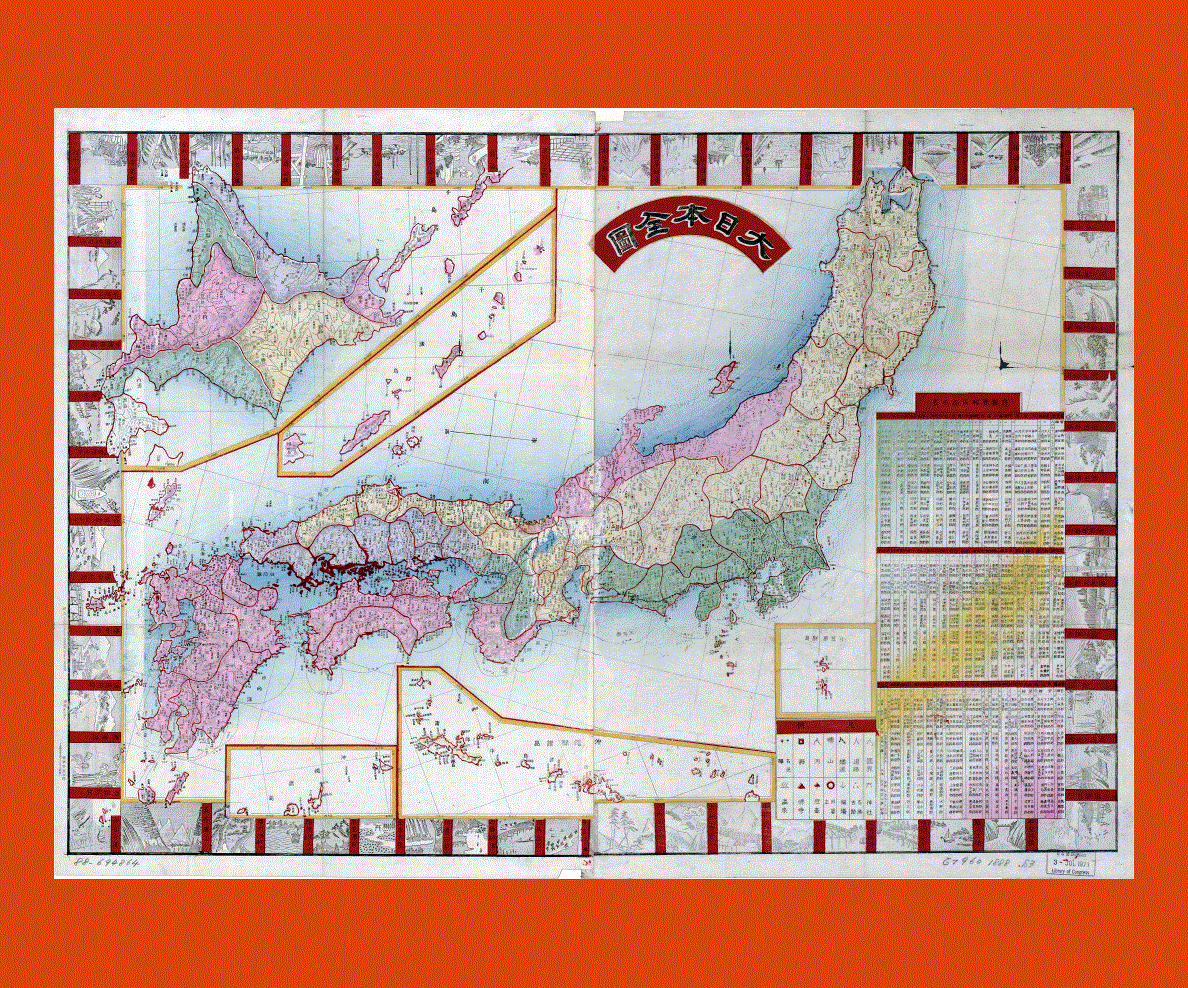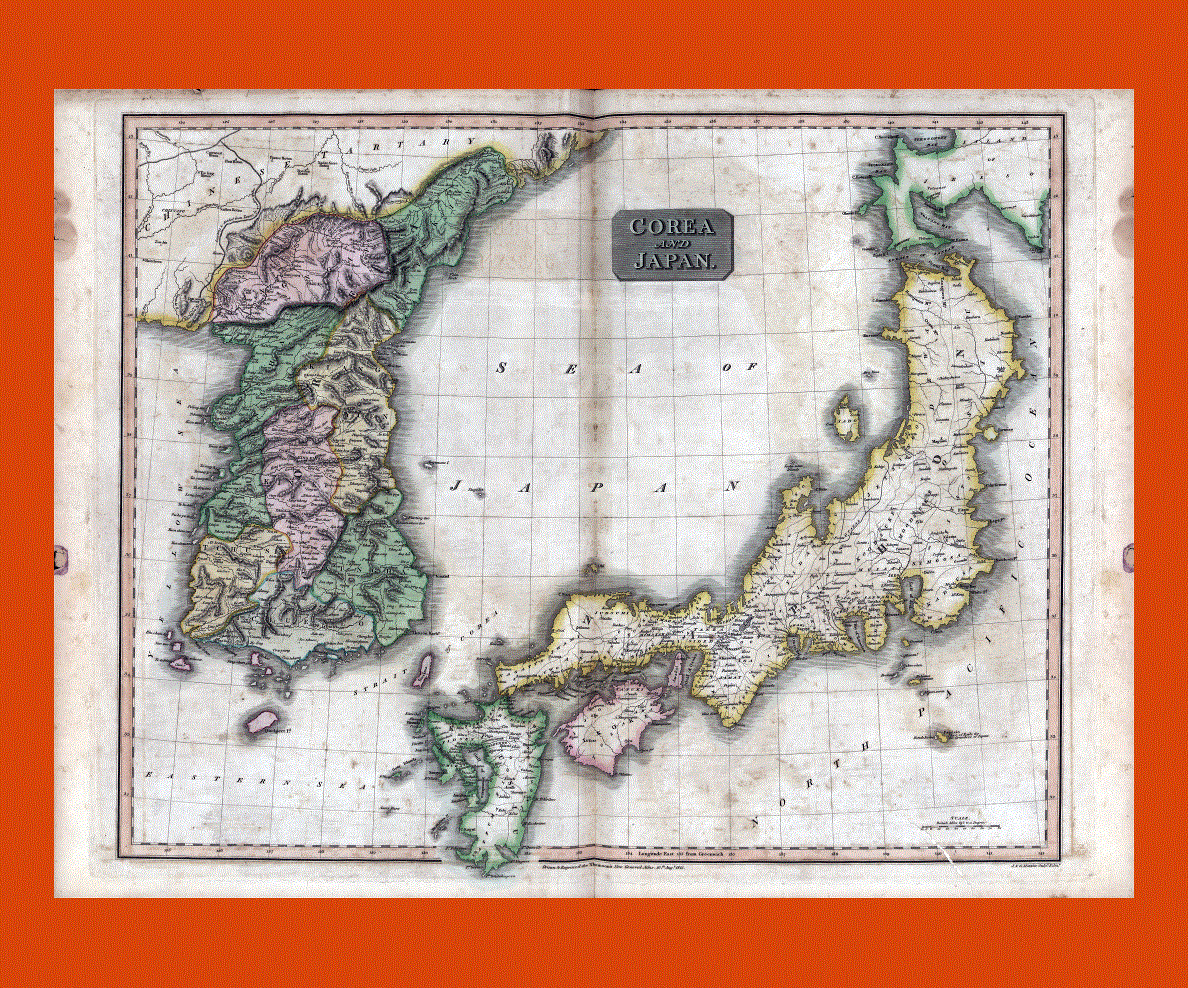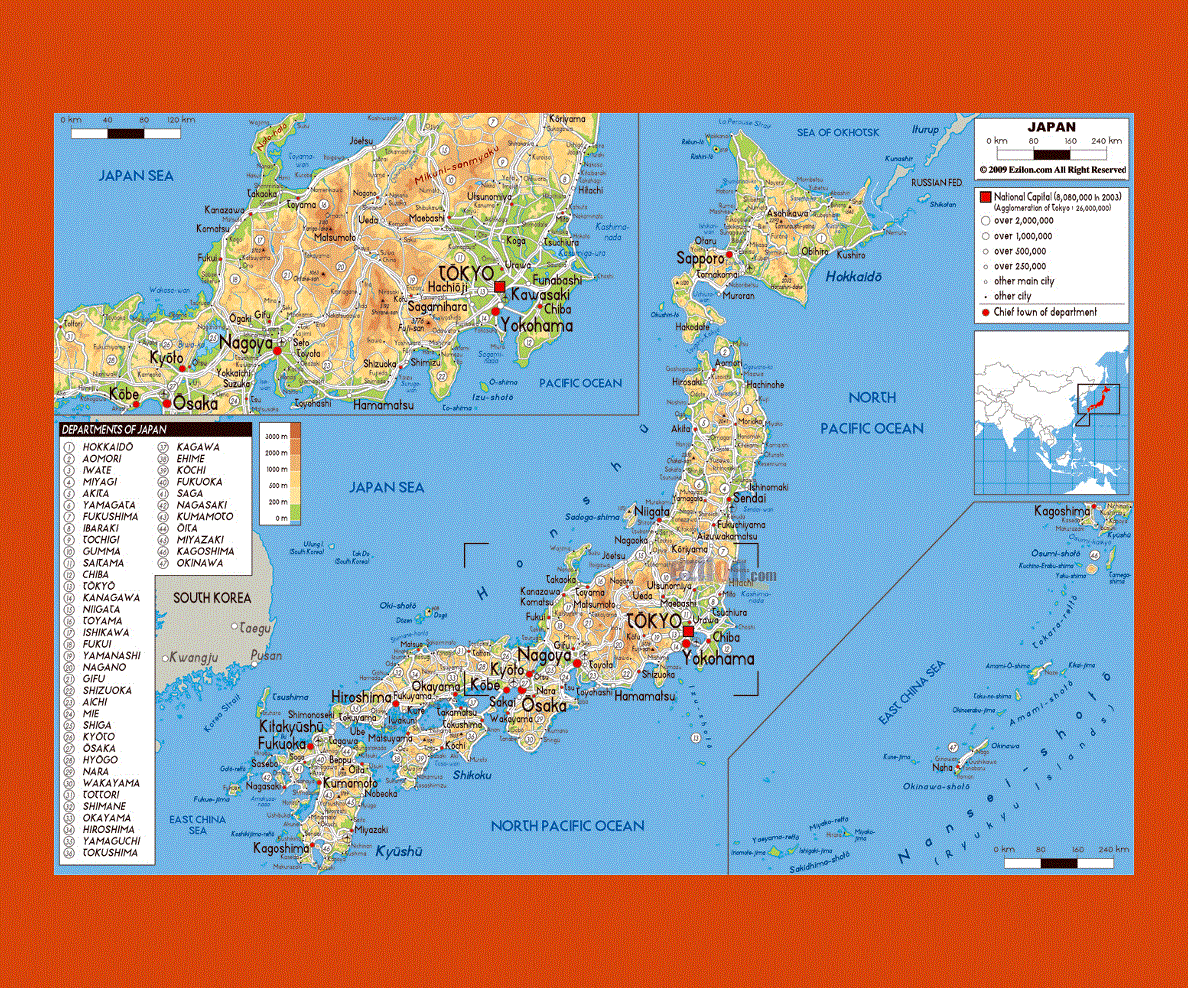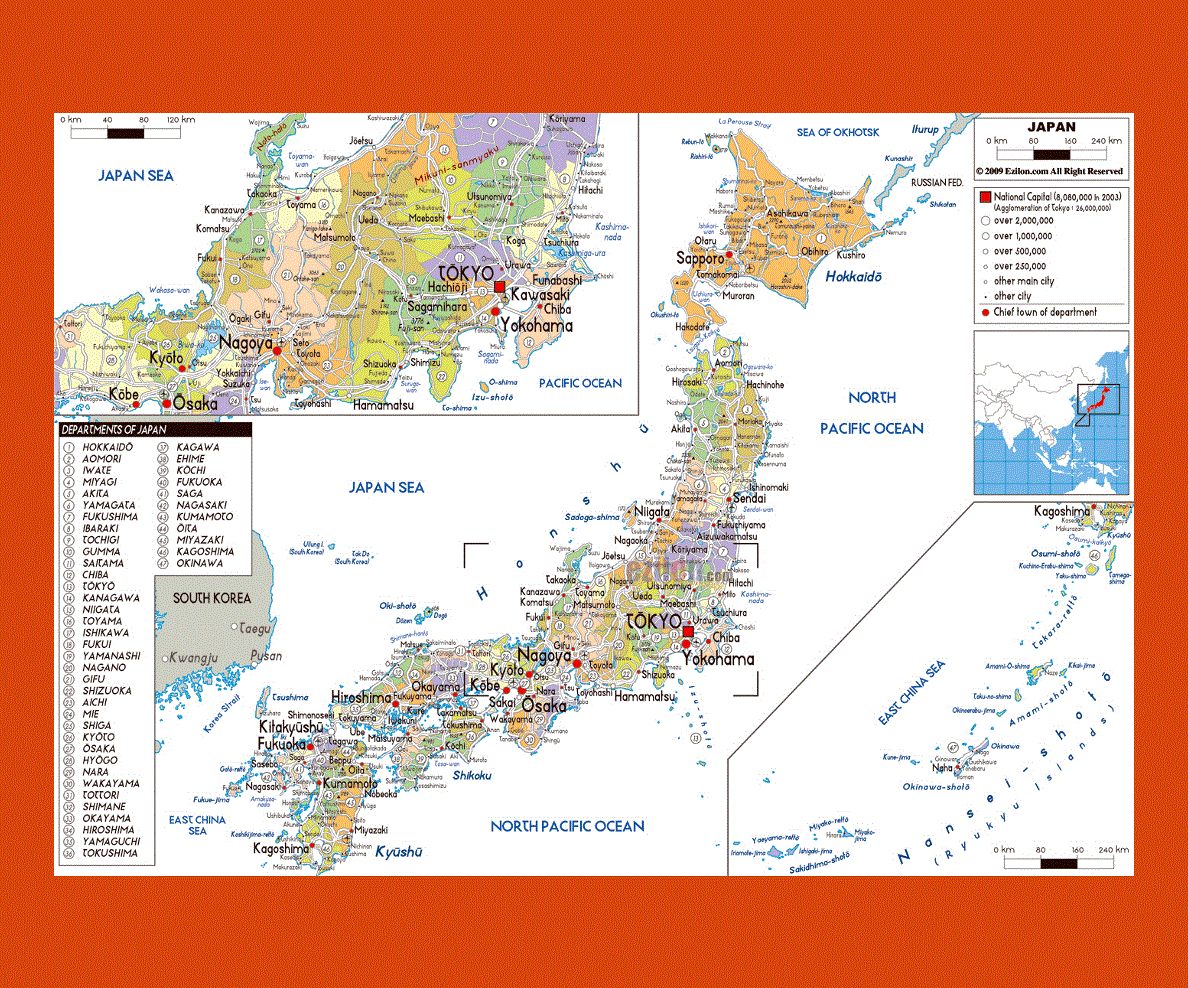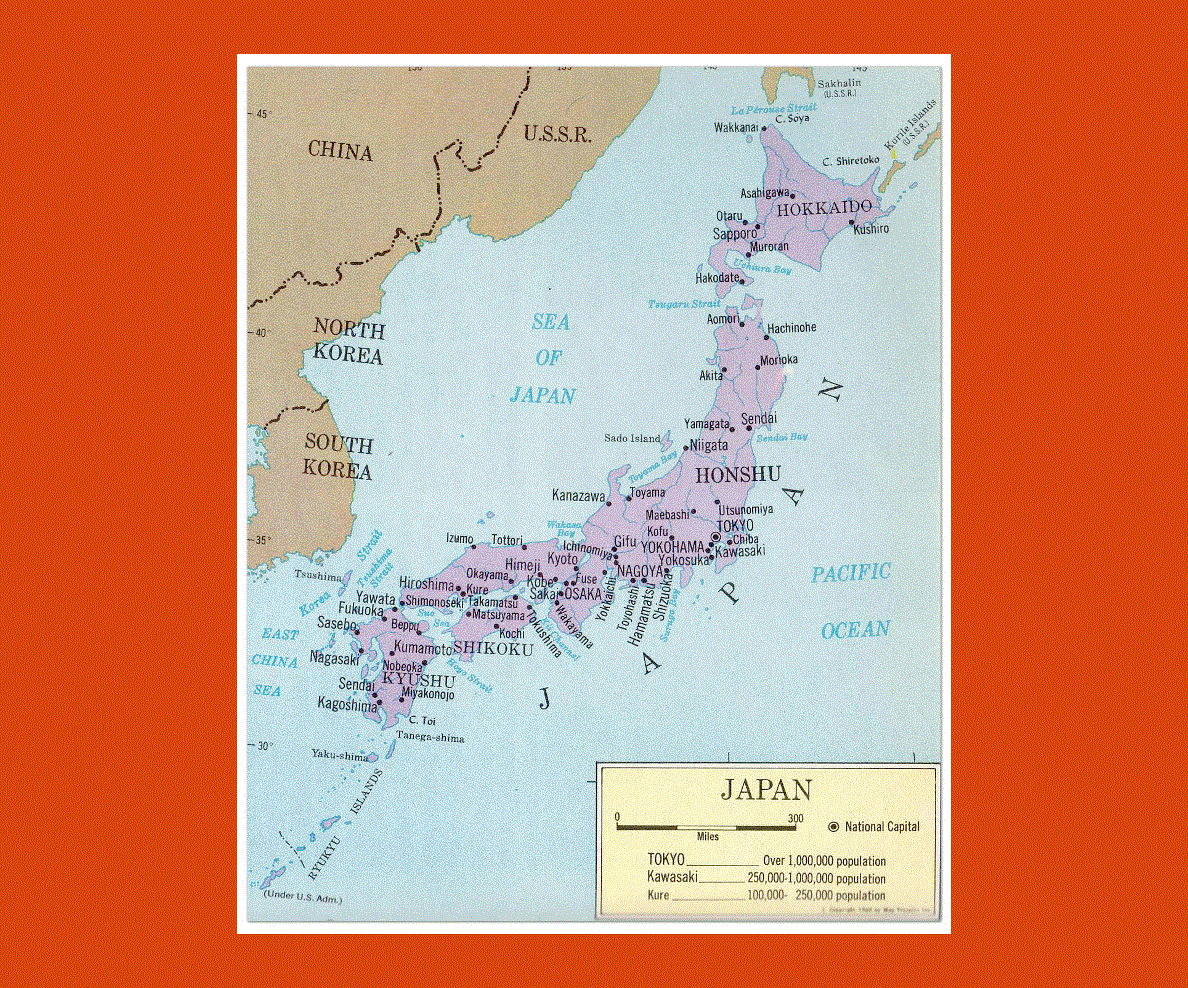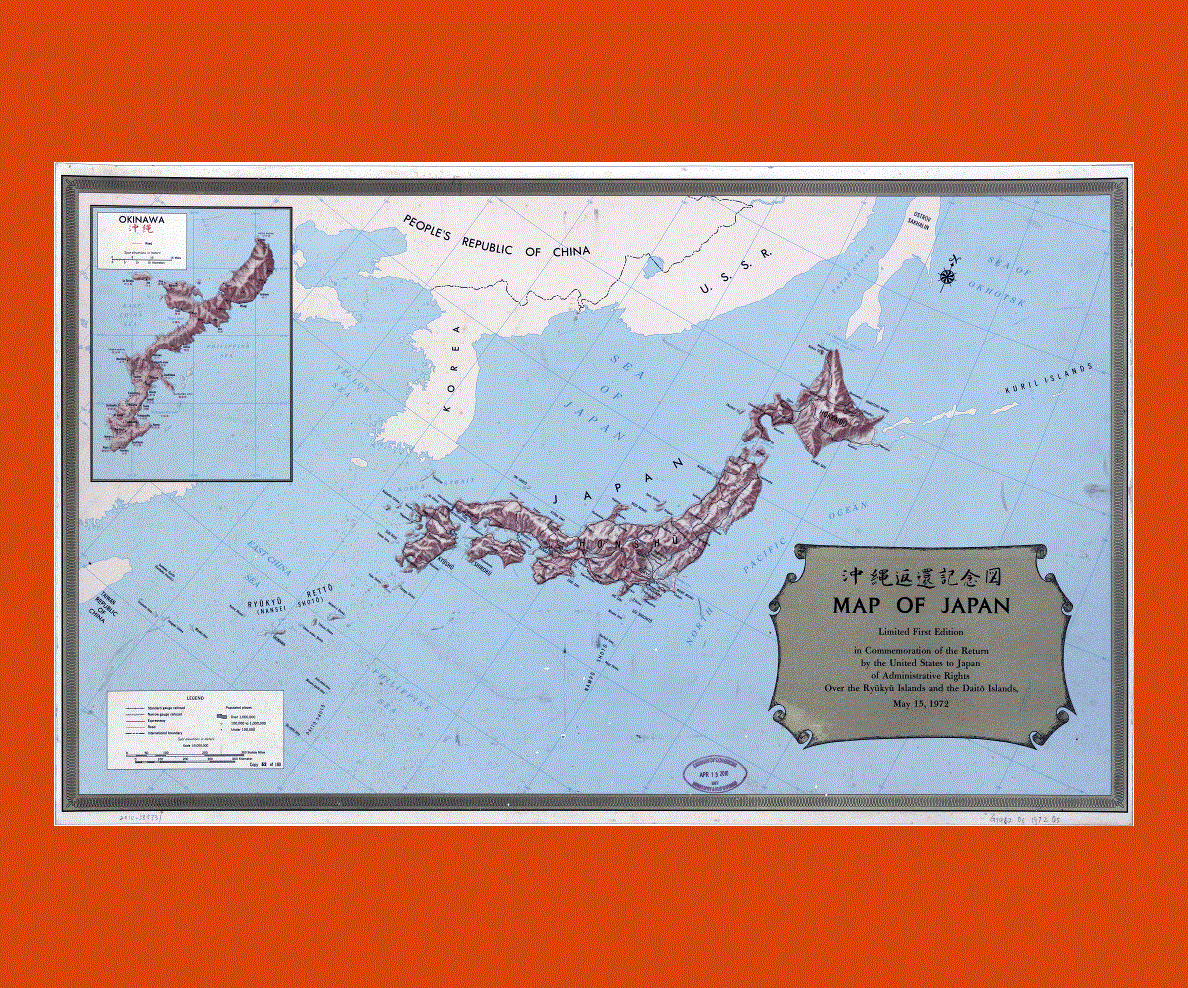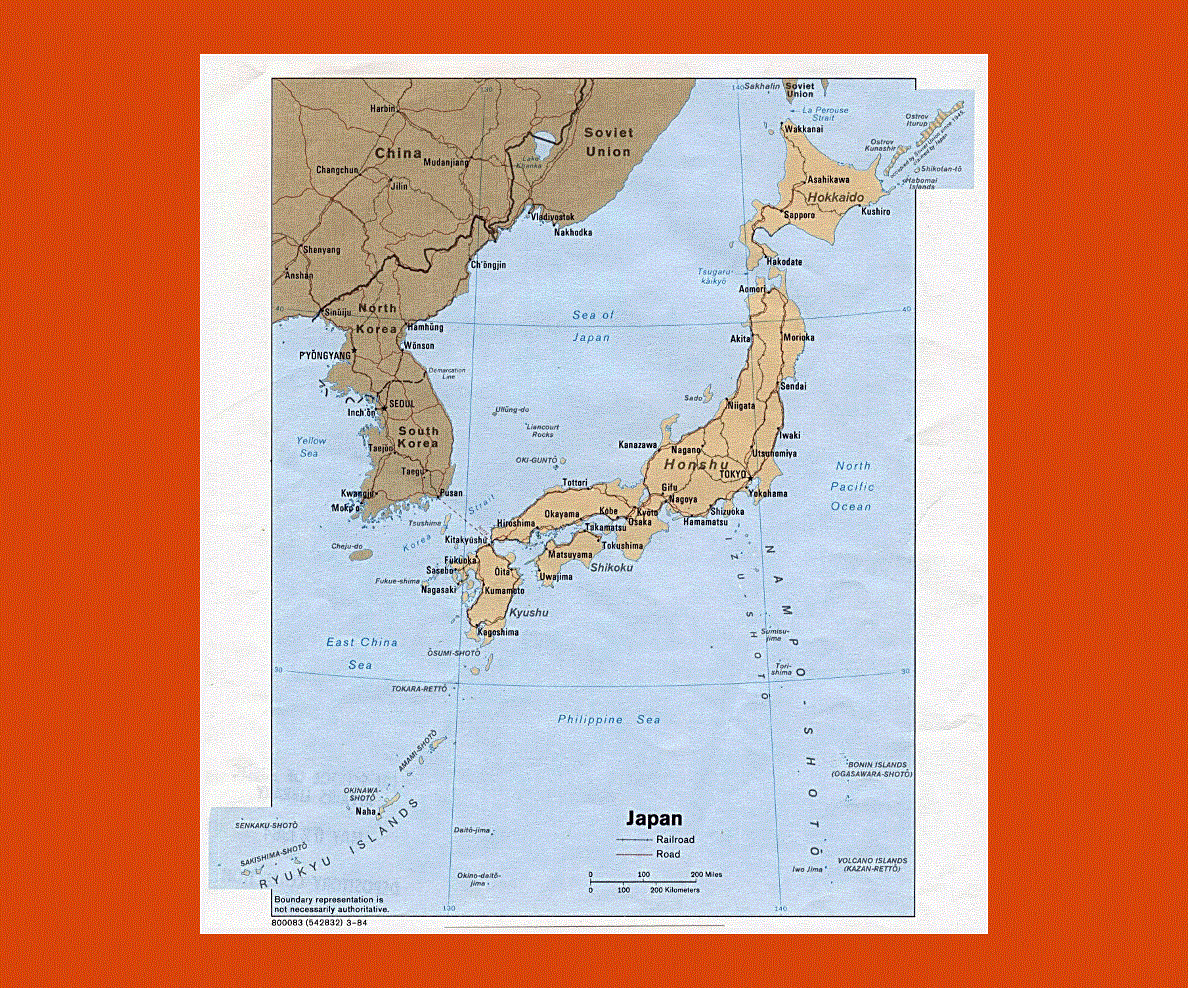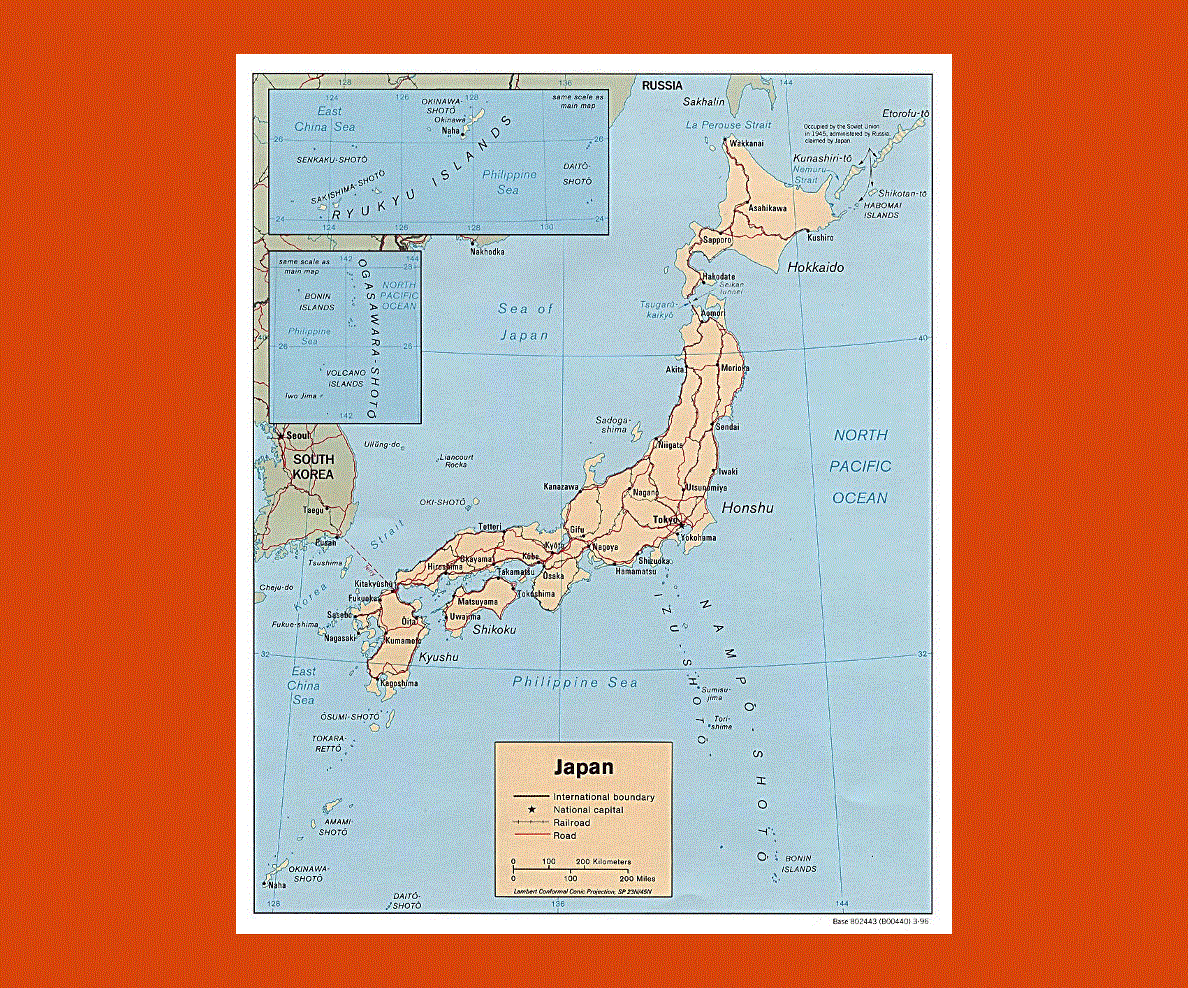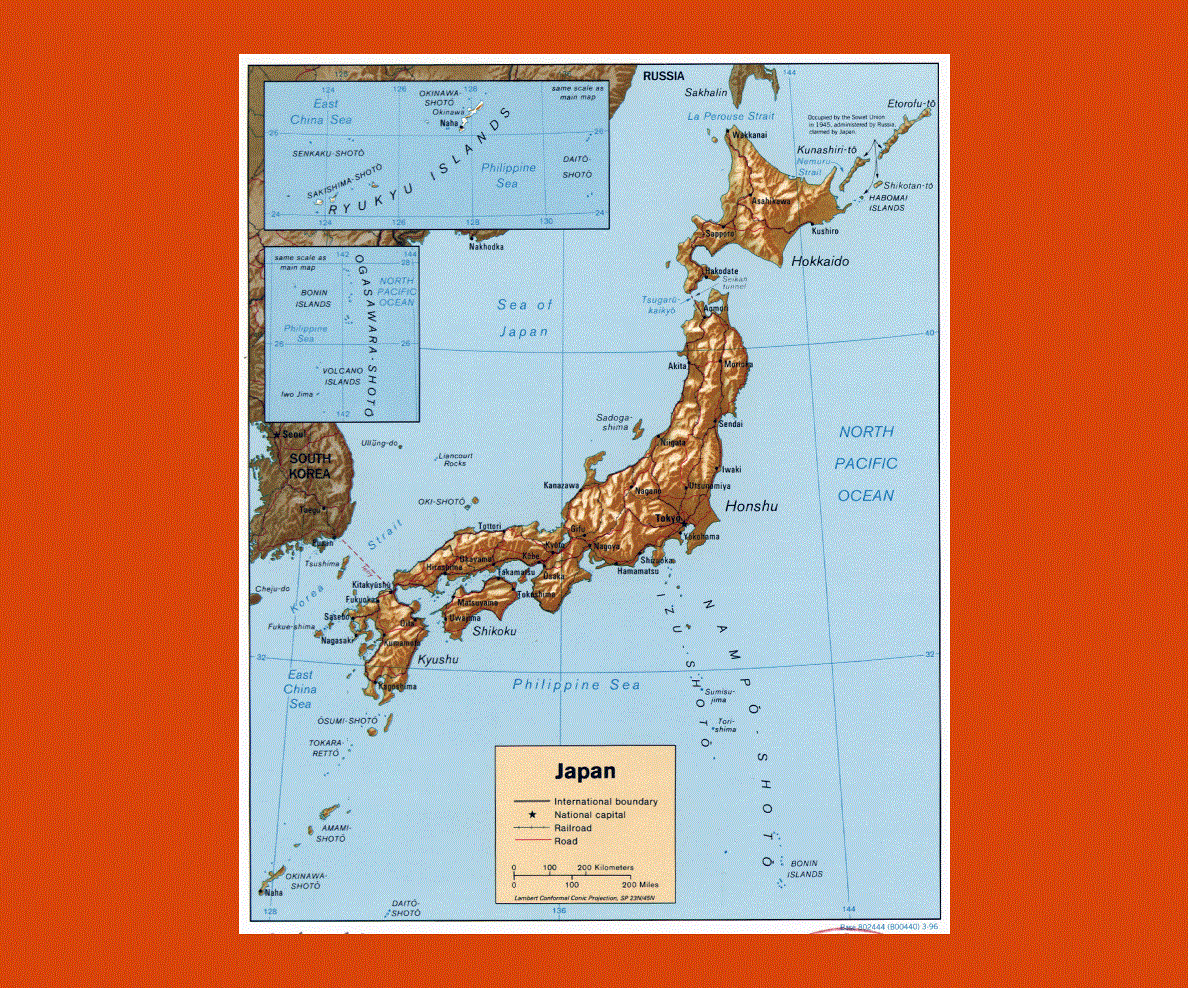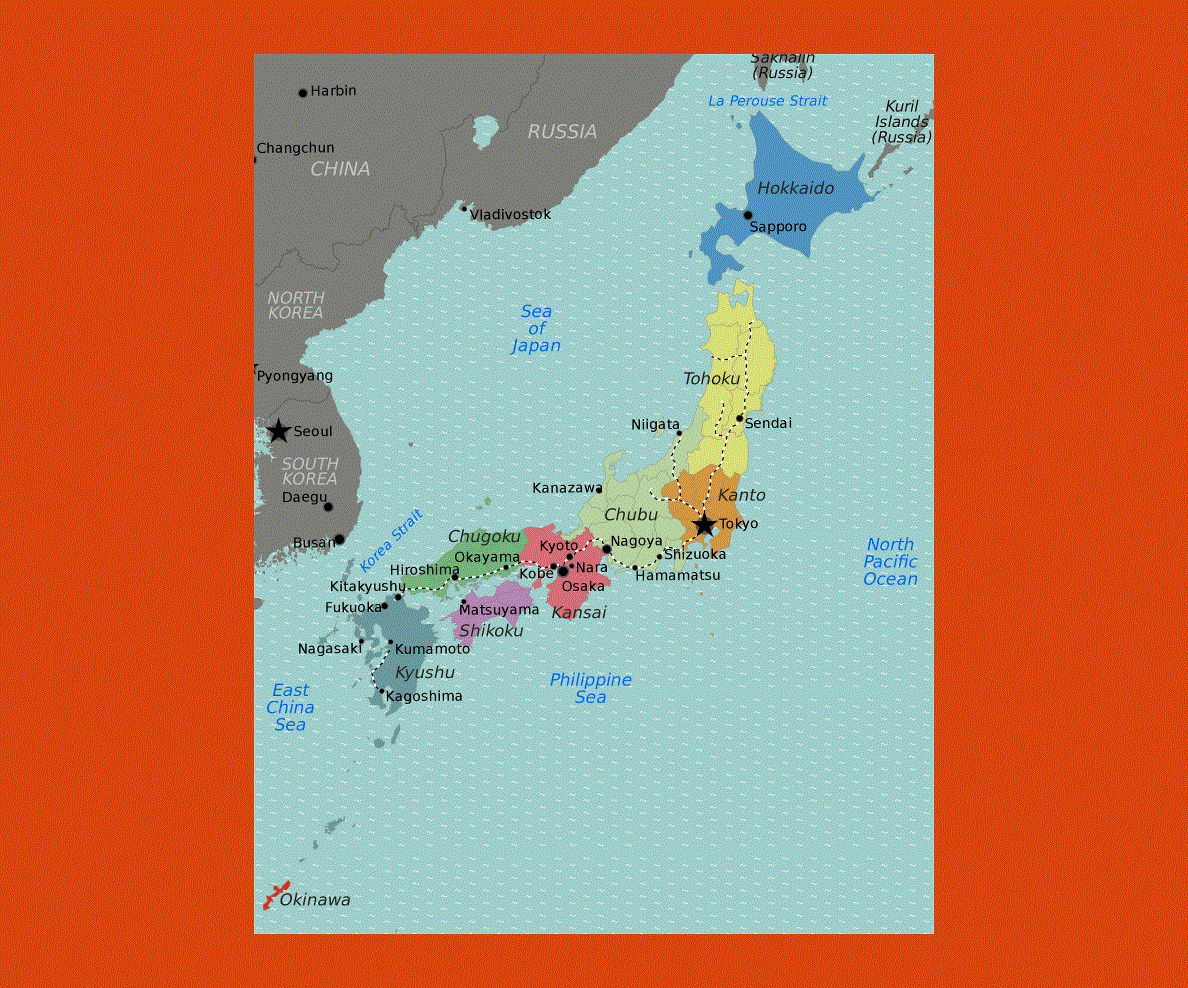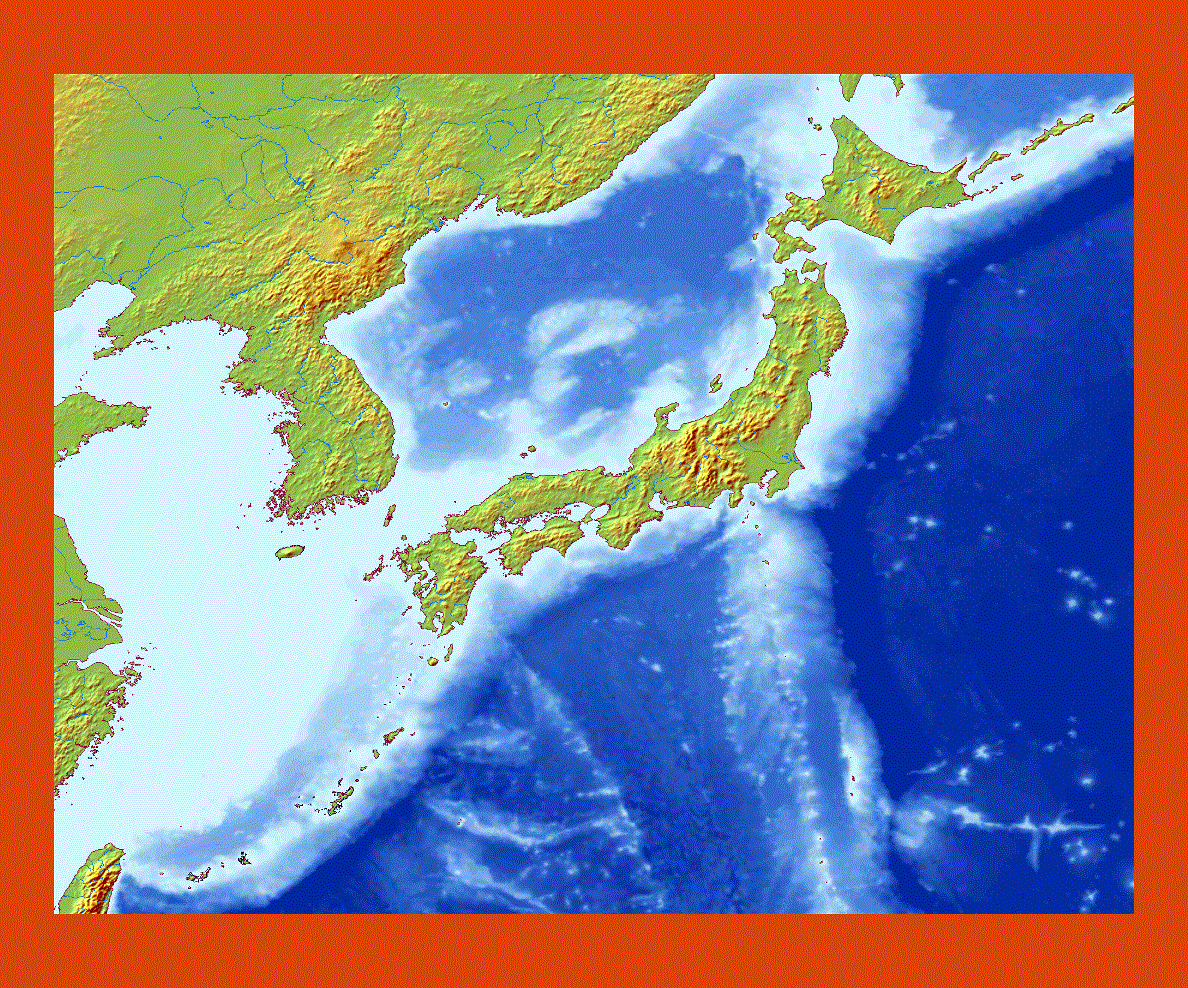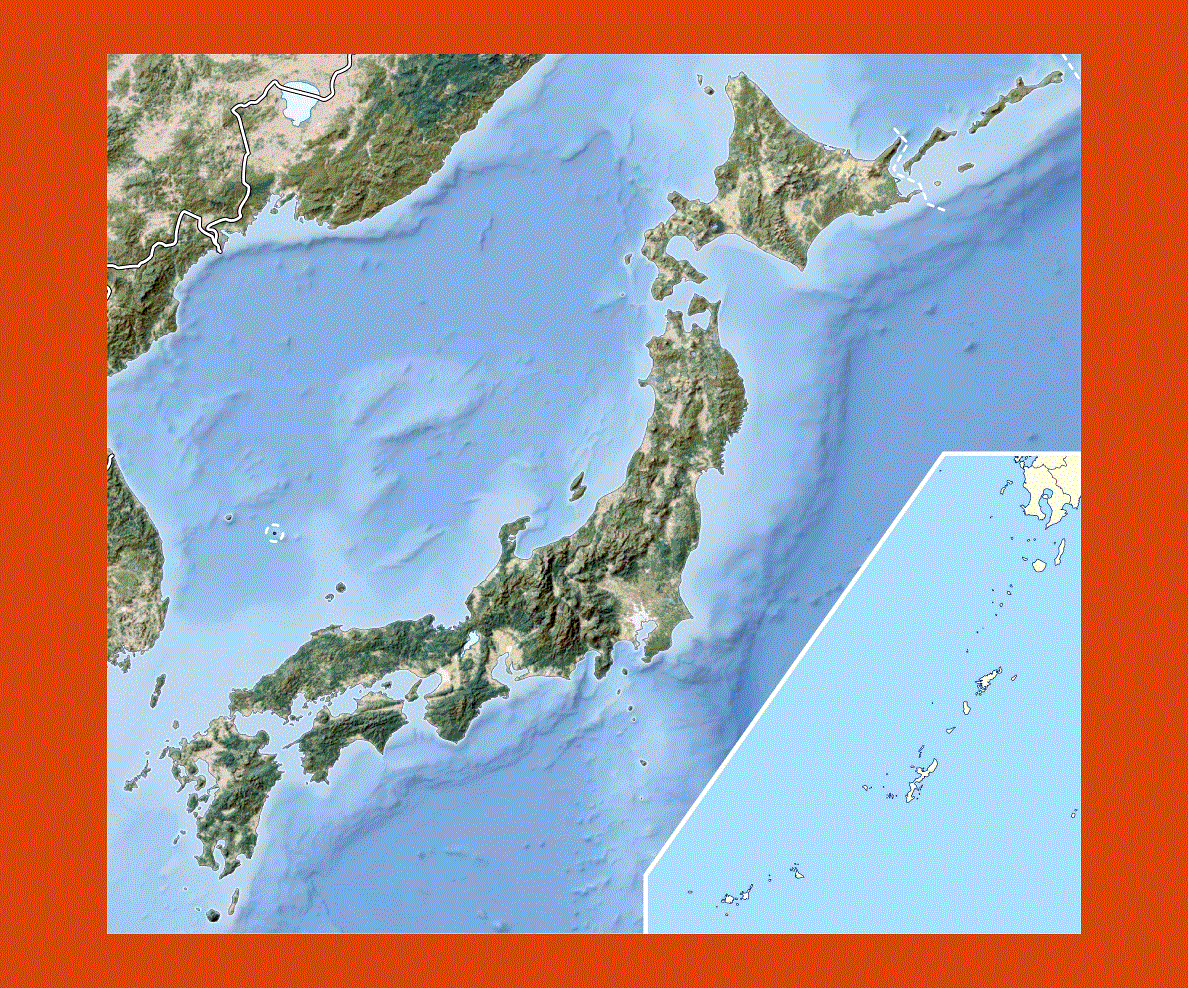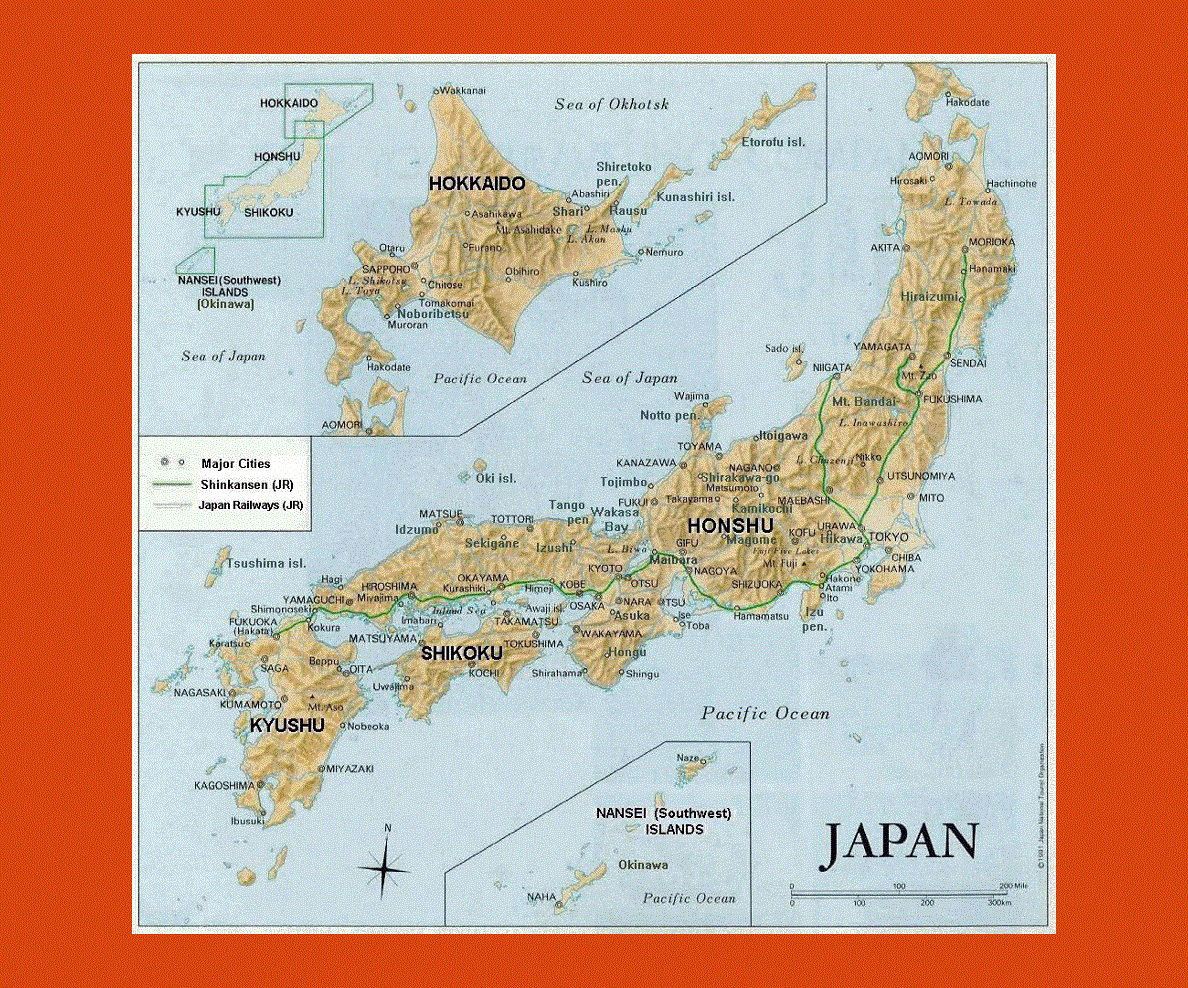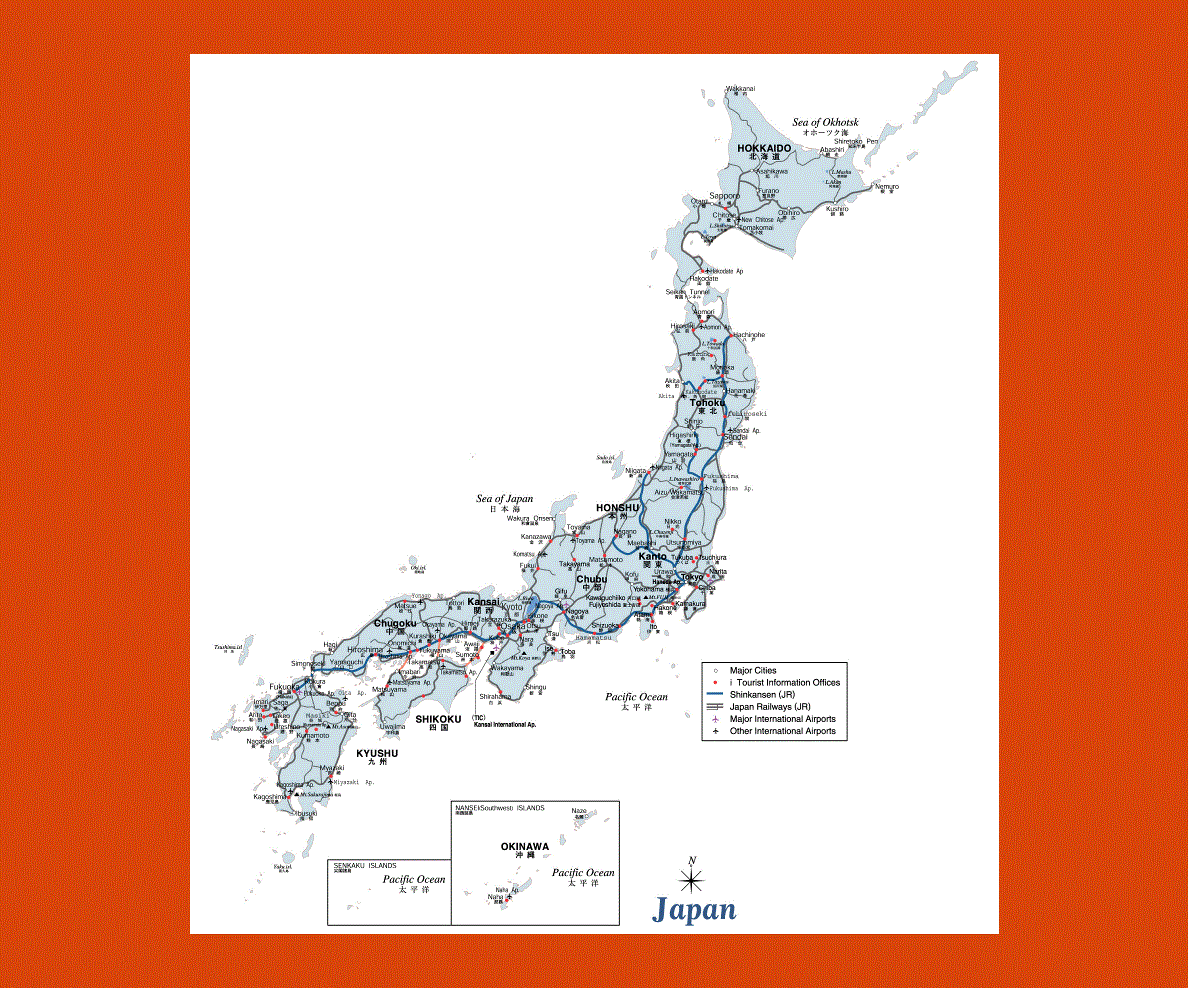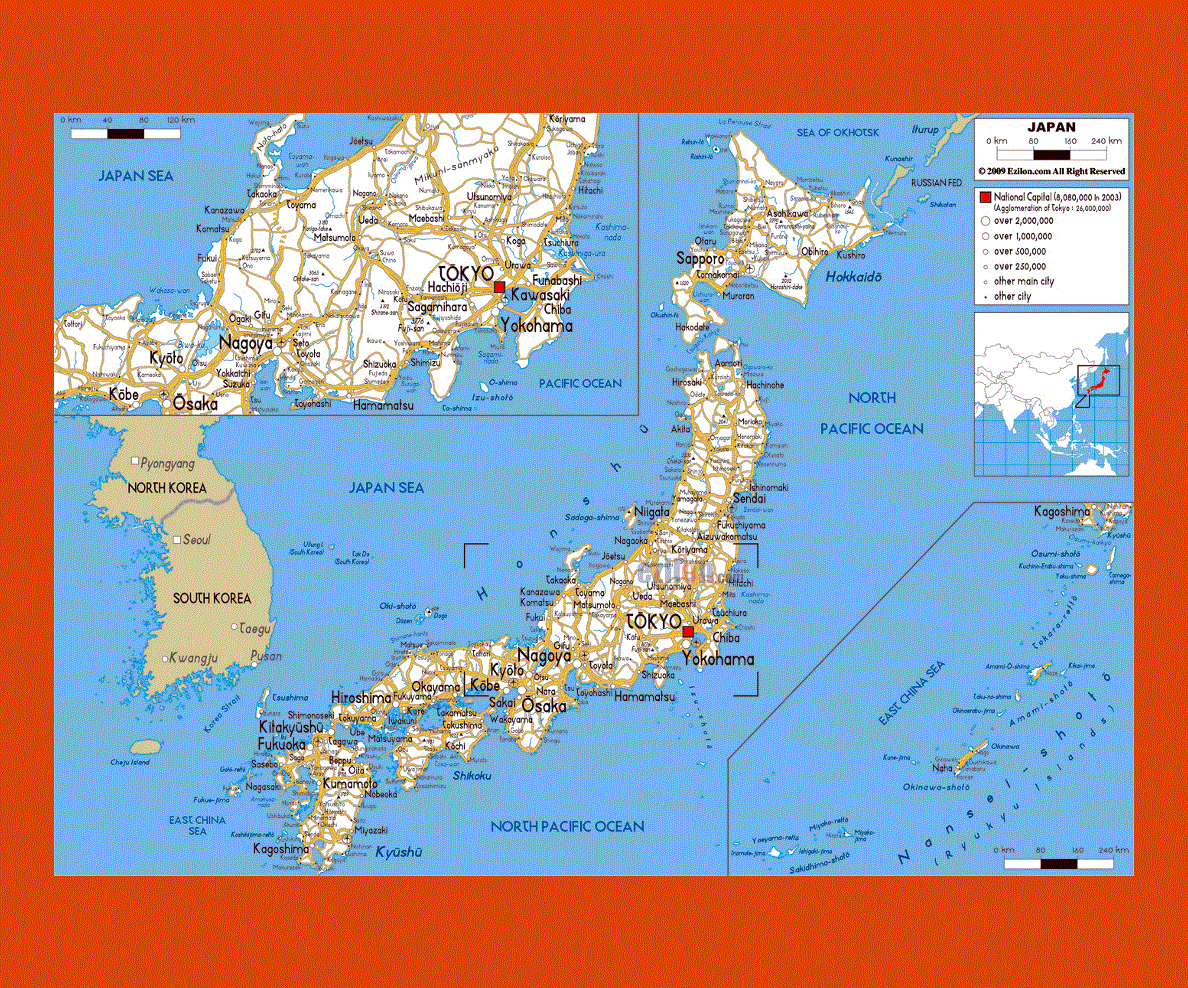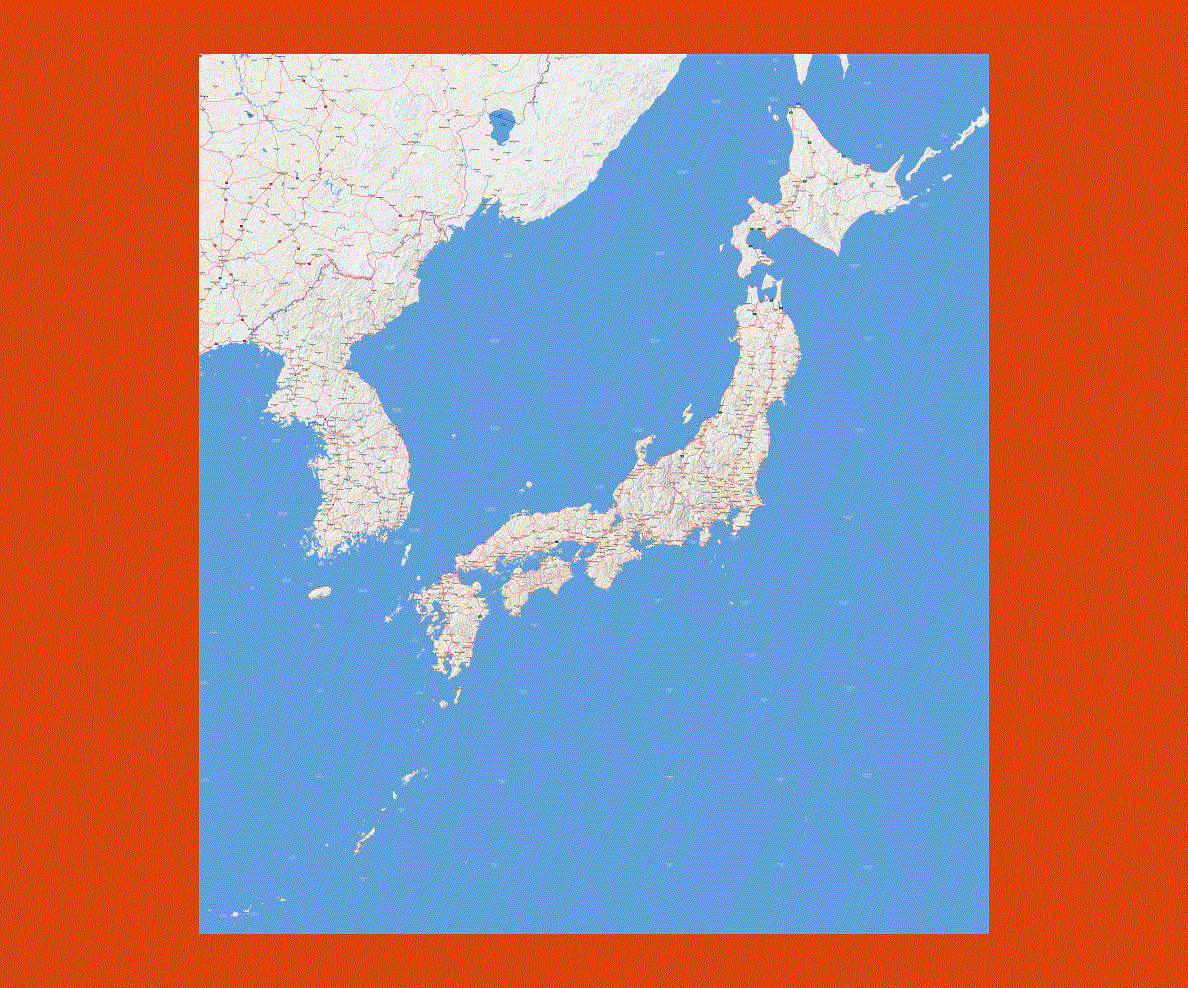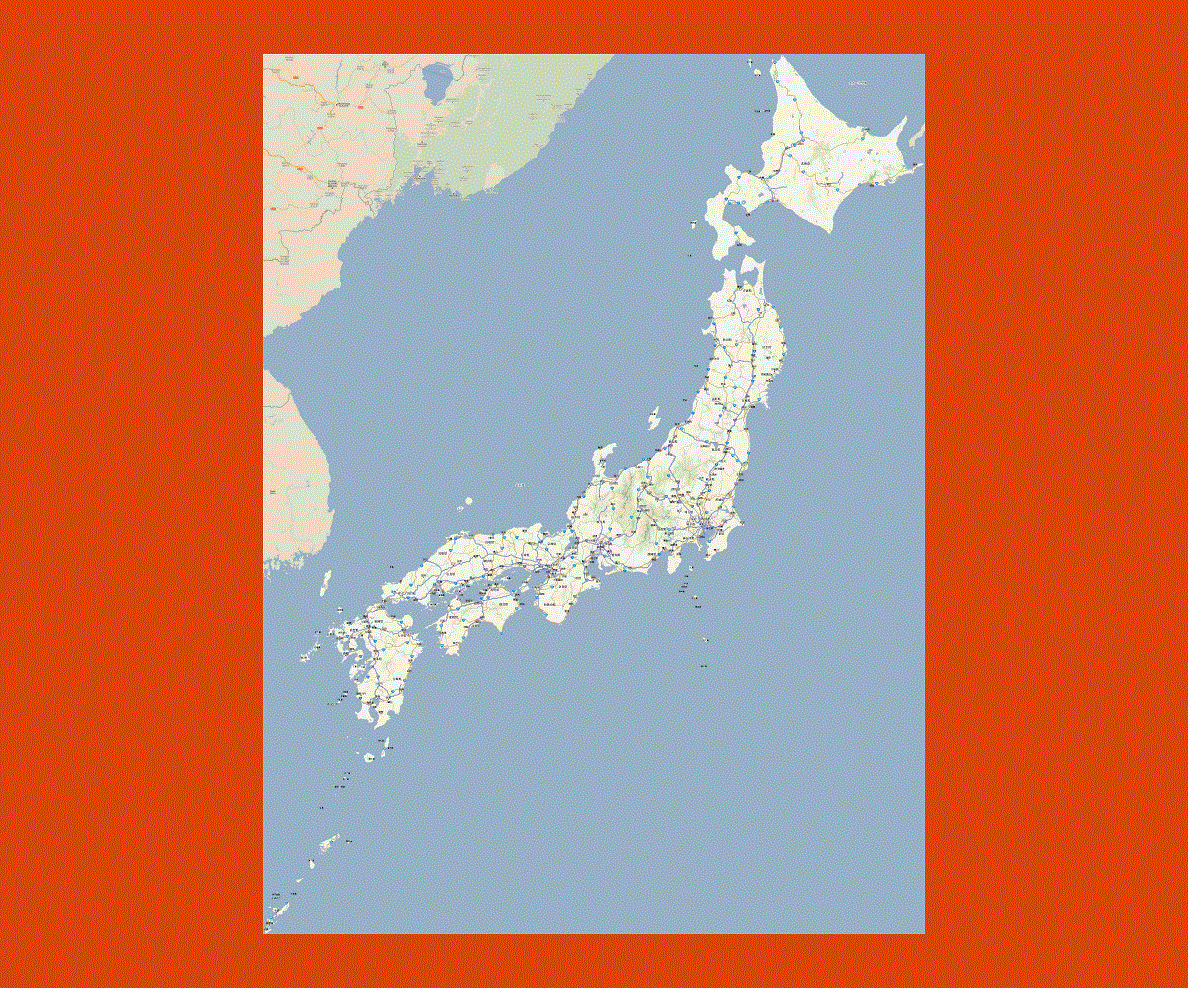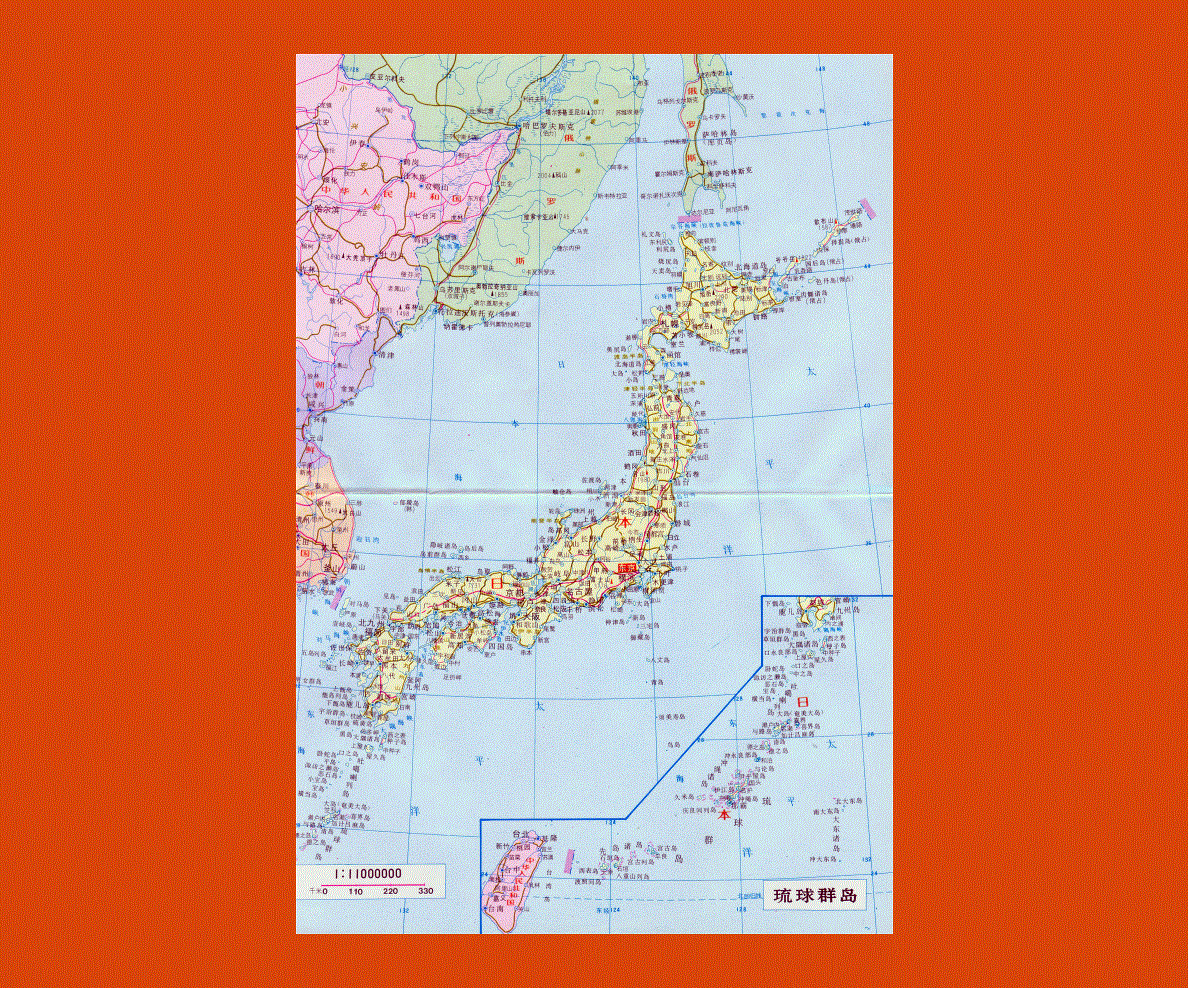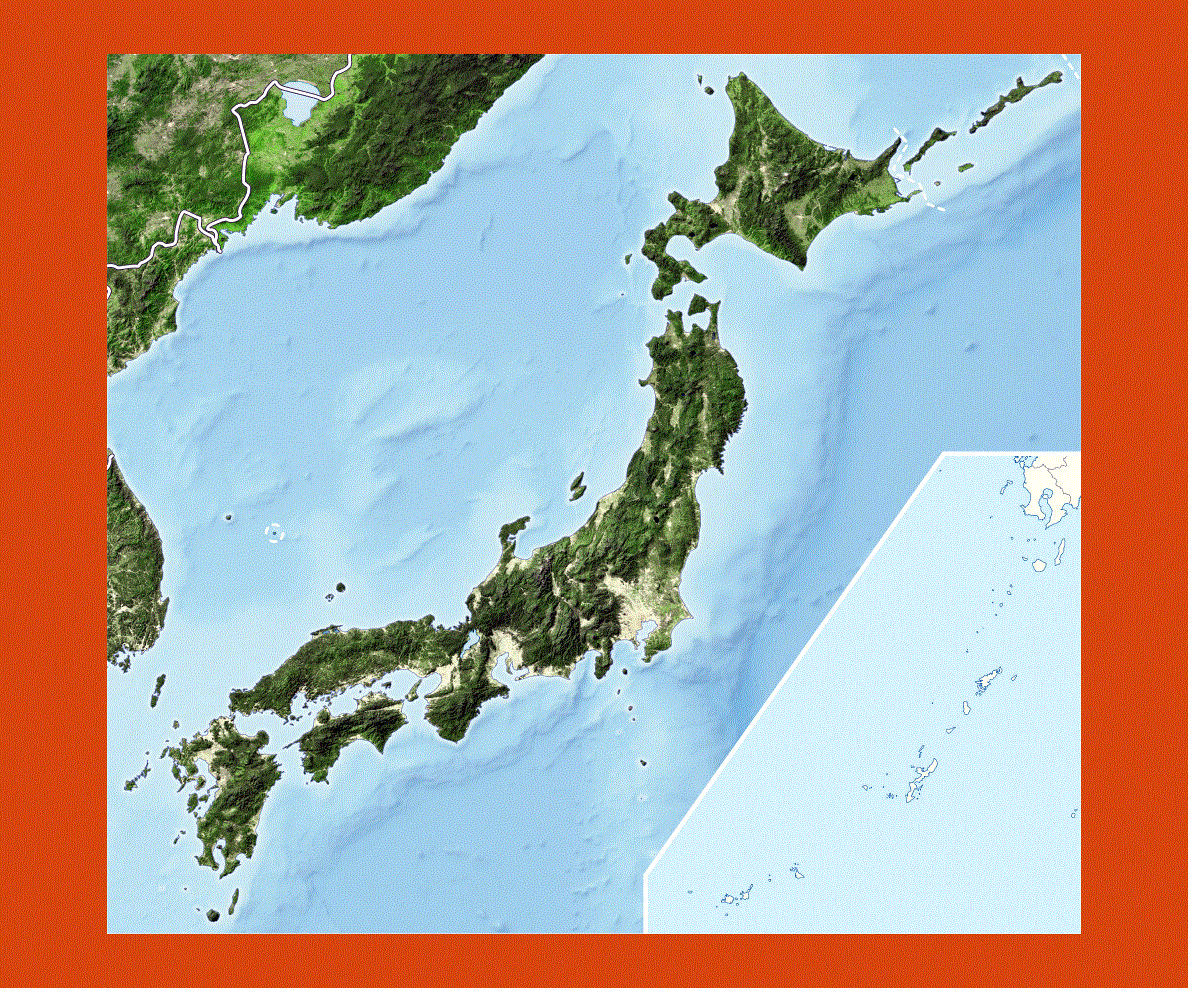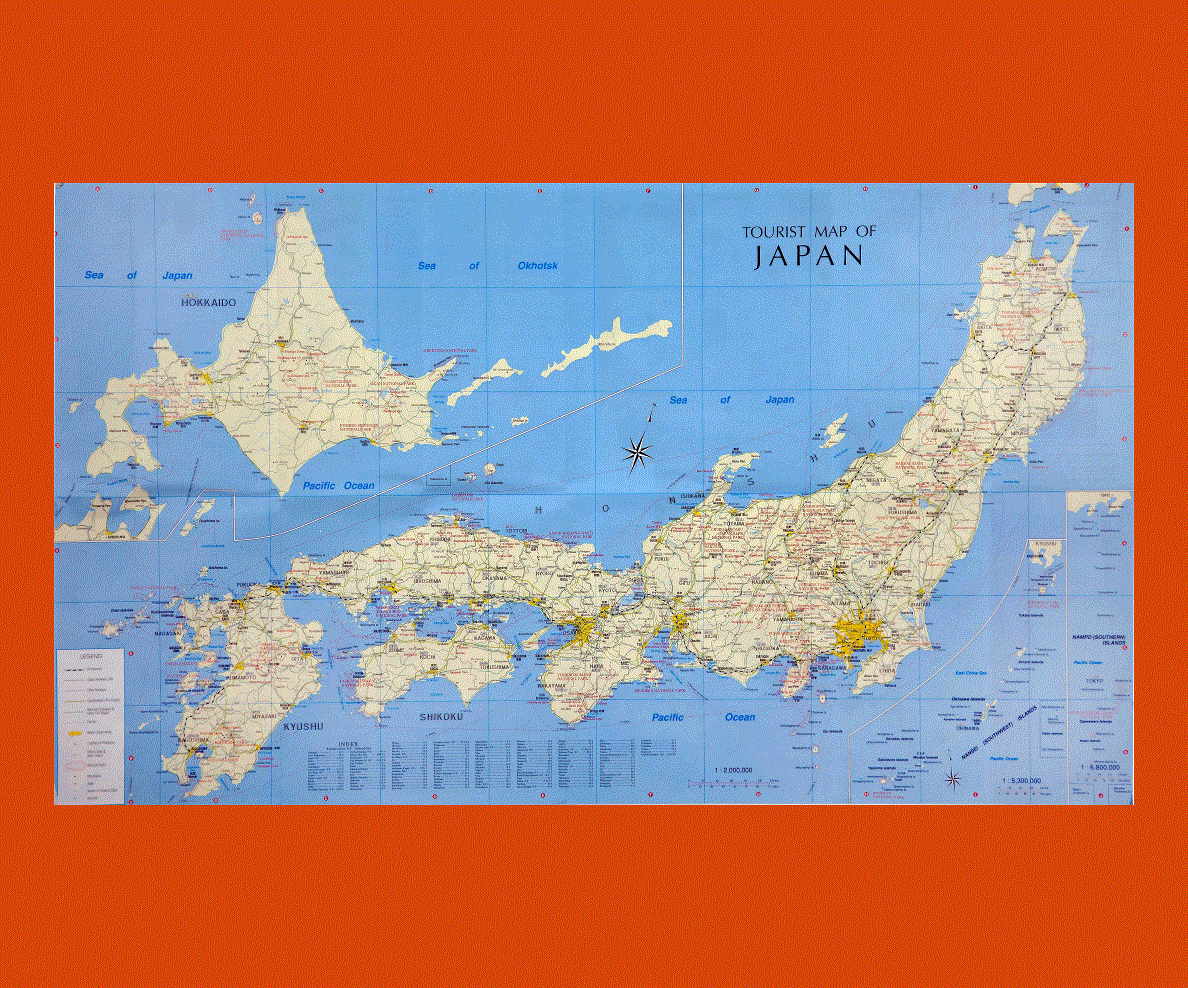Maps of Japan
Situated in the Far East the archipelago of Japan is separated from the Asian mainland by the sea and split in four main islands: Honshu, Hokkaido, Kyushu and Shikoku. The capital is Tokyo and the official language Japanese.
Most of the country is covered with hills and mountains, a few of which are still active or dormant volcanoes, notably Mount Fuji the highest in the country rising to 3,776 m above sea level. The costal line is very long and varied, with deeply indented bays and natural harbors with the backdrop of mountains. Japan is composed of thousands of islands of magnificent natural beauty, with the lavender farms of the isle of Hokkaido in the north and the subtropical beaches of Okinawa in the south.
Japan is also a blend of cultural traditions of the past and modern high technology of the future. Tokyo, the capital as well as Osaka and Sapporo are packed with modern skyscrapers and high-tech gadgets, while the rural villages such as Kyoto and Nara offer century-old Japanese culture and sites, with temples, shrines, splendid rock gardens, community festivals and traditional food.
Other sites not to miss are Miyajima, near Hiroshima, a beautiful island famous for the red Shinto tori gateway, which seems to float during high tide. Here one may visit the Itsukushima Shrine, the tame deer, and the cable car up the central mountain for panoramic views.
The climate is temperate with warm to hot summers from June to September and mild weather during spring and autumn. June and July is the rainy season. Hokkaido is an exception with its subtropical climate. Typhoons can sweep the country during September or October.



